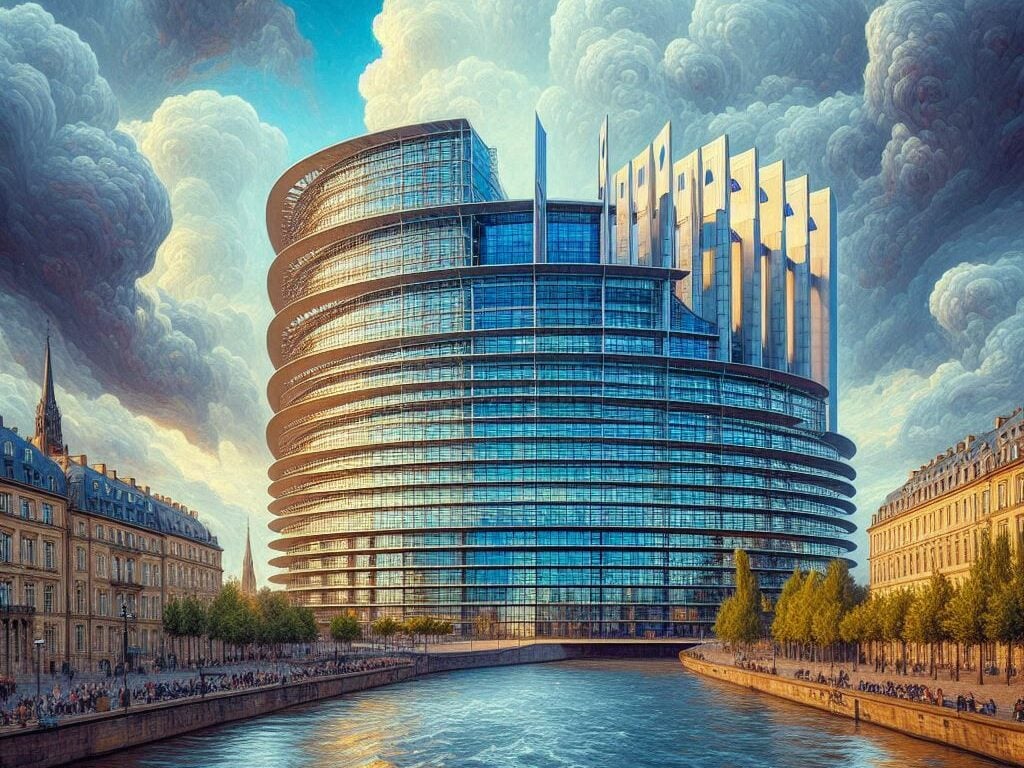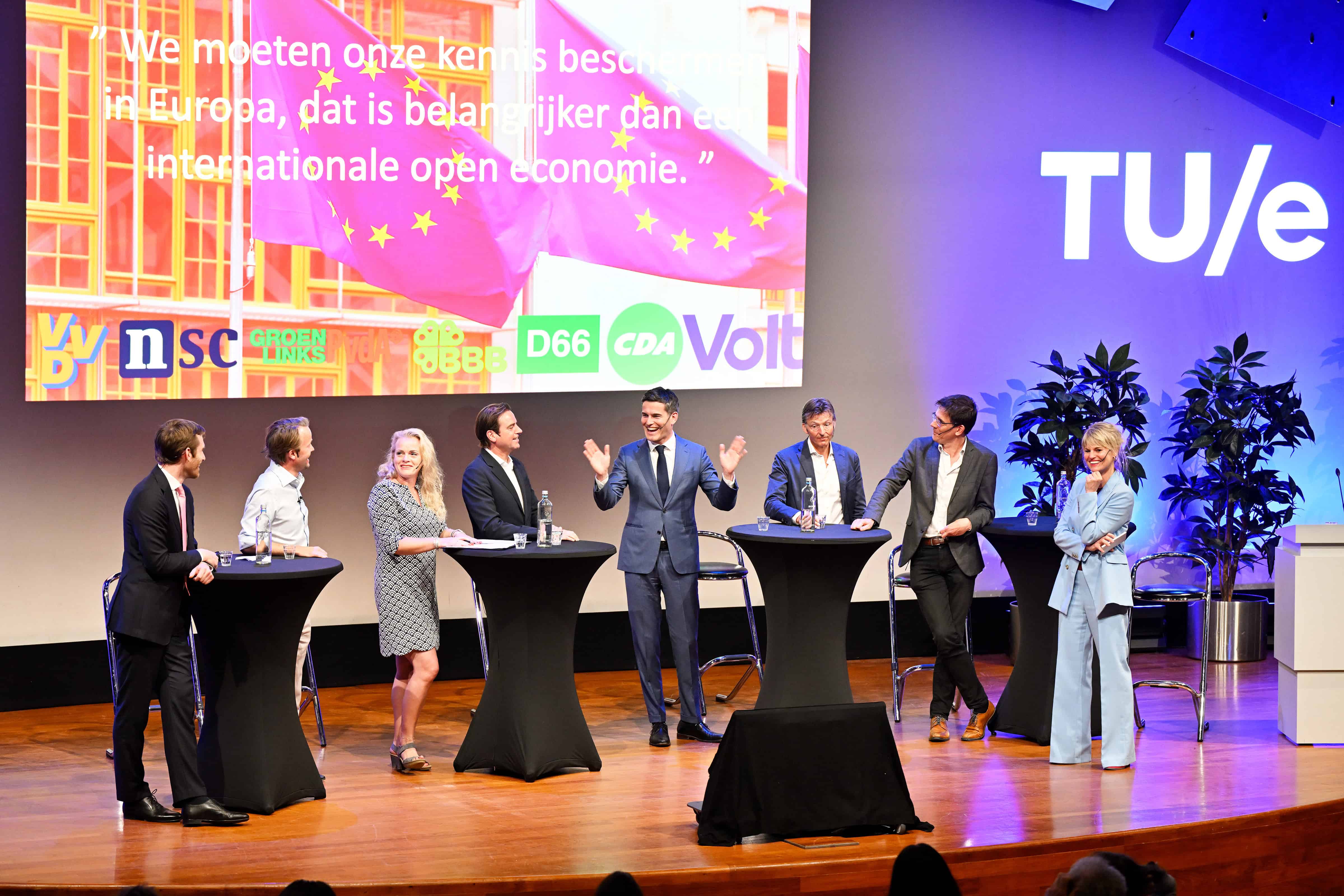
It’s election week: from Thursday to Sunday, around 359 million European Union citizens can vote and elect the 720 members of the European Parliament (MEP). Alongside the Council of the EU, the Parliament is one of the bloc’s lawmaking institutions, and MEPs are those voting on legislation, the next Commission president, and the EU’s chief diplomat.
Why this is important:
European elections allow citizens to appoint their representatives for the upcoming five years. Each party’s electoral manifesto presents different perspectives on technology and innovation, with the aim of confirming or reshaping EU policies.
Voters cast their ballots for national lists per their national electoral rules. The results in each country determine how many MEPs each national party gets in the Parliament out of those assigned to each member state. The larger a country’s population, the more seats it gets.
Each national party in the EU is associated with a European-wide political party, a strategic alliance that allows like-minded representatives to collaborate in parliamentary groups. This system has led to forming seven EU parliamentary groups, each presenting an electoral manifesto outlining their key campaign points. IO has scrutinized each manifesto, focusing on one key question: What do these manifestos reveal about the parties’ stance on innovation and technological progress? From human-centered AI to technology neutrality in the green transition, here is what the different parties stand for.
European People’s Party (EPP)
Quick facts
- Ideological orientation: center-right, conservative, Christian democrat;
- Lead candidate: Ursula von der Leyen, outgoing president of the European Commission;
- Projected seats per POLITICO Poll of Polls: 171
Outgoing European Commission president Ursula von der Leyen is seeking a second stint at the office as polls forecast EPP as the party claiming the largest share of seats. The EPP is one of the most influential groups in the parliament: since 2004, the President of the Commission has been a Christian Democrat.
What does the EPP manifesto say?
EPP’s Manifesto, energy section, the party advocates for a technology-neutral approach to developing new fuels, hydrogen technologies, and power trains for all vehicles, particularly supporting new liquid fuels. The goal remains to become the world’s first climate-neutral continent by 2050, as the party plans to support European industry throughout its transition.
Regarding healthcare, the EPP wants Europe to become the “of the world in the health sector, harnessing the potential of big data and AI to make the technological discoveries of the future.” And what about AI? The EPP sees its Europe leading digitalization and promoting human-centered AI. “We want to enable, develop, and utilize AI, not contain it or hinder it through over-regulation.”
Progressive Alliance of Socialists & Democrats (S&D)
Quick facts
- Ideological orientation: center-left, social democrat;
- Lead candidate: Nicolas Schmit, outgoing commissioner for Jobs and Social Rights;
- Projected seats per POLITICO Poll of Polls: 142;
S&D is the second-strongest group within the European hemicycle. It was part of the last governing majority and holds the EU foreign affairs portfolio. Although they are expected to lose some seats, polls still see them as the second-largest group in the Parliament.
What does the S&D manifesto say?
The S&D manifesto advocates for a social, democratic, and sustainable Europe. In continuing to invest to achieve climate neutrality by 2050, the party aims to align climate policies with social ones. In addition, the program calls for an investment plan for the green and digital transition to “reindustrialize our economy and make it innovative, competitive, and circular.” The document also refers to support for startups and help to female and young entrepreneurs.
The economy section of the program also touches upon the willingness to strengthen Europe’s sovereignty by delivering security of supply in energy, raw materials, technologies, medicine, and food. The S&D’s manifesto refers to the “human in control” principle regarding the harnessing of AI while protecting citizens and workers.
Renew Europe (Renew)
Quick facts
- Ideological orientation: centrist, economic liberals, social liberals;
- Lead candidates: Valérie Hayer, MEP; Marie-Agnes Strack-Zimmermann, member of the German Parliament; Sandro Gozi, MEP;
- Projected seats per POLITICO Poll of Polls: 76;
Renew Europe is the platform for liberals, including the following European parties: Alliance of Liberals and Democrats for Europe (ALDE), European Democratic Party (EDP), and Renaissance (RE).
What does the Renew manifesto say?
Each party presented its own manifesto for the upcoming elections while sharing a ten-point priorities list. ALDE’s manifesto supports embracing AI in a human-centric manner. In addition, it backs investments in “all types of renewable, carbon-neutral, low-carbon, and waste-based energy sources, including nuclear energy, complemented by carbon removal, capture and storage technologies.”
The EDP program advocates for simplified access to EU funds for research and development and promotes the commercialization and market adoption of new technologies and innovations. The plan supports AI and pledges to invest in its development and implementation. In addition to increasing materials’ circularity, the plan supports clean energy developments while respecting technological neutrality.
Greens and European Free Alliance (Greens/EFA)
Quick facts
- Ideological orientation: environmentalists, left-wing, left-liberal;
- Lead candidates: Terry Reintke, MEP; Bas Eickhout, MEP;
- Projected seats per POLITICO Poll of Polls: 41;
The Greens’ origins date back to the 1980s, with the rise of the environmentalist movement, particularly the German one. EFA reunites left-wing regionalist and separatist parties.
What does the Greens/EFA manifesto say?
The Greens’ 12-point plan proposes a €200 billion yearly investment to protect people and the planet, expand public transport, install solar panels on all roofs, and create new jobs in the renewable sectors. The manifesto also calls for 100% renewable energy by 2040 and advocates for shifting the budget spent on industrial agriculture to sustainable farming.
In its manifesto, the EFA calls for renewable and low-carbon projects in harmony with the local communities, supporting the European Green Deal. In addition, the plan calls for farmers’ support in upholding sustainable practices.
European Conservatives and Reformists (ECR)
Quick facts
- Ideological orientation: conservative, far-right, hard right;
- Lead candidates: –
- Projected seats per POLITICO Poll of Polls: 75;
Originally founded by the UK conservative party, it left the EPP to underline its Euroscepticism. Led by Italian PM Giorgia Meloni, the Polish and Czech ruling parties also support the party. The ECR failed to agree on a lead candidate.
What does the ECR manifesto say?
The manifesto calls for revising the Green Deal in favor of a localized climate strategy and for a “thorough review” of the current Common Agricultural Policy aiming to “promote environmental and social sustainability while supporting our farmers, their families, and rural communities.” The ECR is “unapologetically committed” to changing energy security and driving innovation and plans to spur innovation and investment in AI, 5G, and quantum computing.

Identity and Democracy (ID)
Quick facts
- Ideological orientation: far-right, Euroscepticism, nationalism;
- Lead candidates: Anders Vistisen;
- Projected seats per POLITICO Poll of Polls: 69;
Launched ten years ago, the party united far-right nationalists, including Geert Wilders. The ID parliamentary group followed as the German Alternative for Germany (AfD) was recently kicked out.
What does the ID manifesto say?
Being eurosceptics, ID didn’t present a manifesto for these elections. Although the leaders aren’t calling for their countries to leave the EU, their goal is to dismantle the bloc eventually.
The European Left
Quick facts
- Ideological orientation: far-left, communism;
- Lead candidates: Walter Baier;
- Projected seats per POLITICO Poll of Polls: 32;
The Left is the smallest Parliament group and emerged from the traditional European communist movements. The movement suffered a decline from national parties such as Podemos in Spain and Germany’s Die Linke.
What does the Left manifesto say?
The Left manifesto stands for effective AI regulation with a humans-in-control principle, banning AI from high-risk use cases and weapon systems. The plan also advocates reserving 7% of EU GDP for education, research, and innovation. In addition, the plan proposes to increase the target for reducing greenhouse gas emissions from 55% to 65% by 2030 and bring forward the date for the European Union’s climate neutrality from 2050 to 2035.
Non-inscrits
In addition to the MEPs affiliated with European parties, the POLITICO Poll of Polls suggests that 59 seats will go to non-inscrits MEPs, who are not formally part of any political group. As of June 3, polls suggest that 56 more will go to new unaffiliated MEPs. These include Germany’s AfD, Hungary’s Fidesz, and Slovakia’s Smer.
As the latest polls suggest a rise of far-right MEPs, the EPP is expected to retain most seats. The way the new government coalition will be formed will tell much of Europe’s outlook on technology and innovation for the upcoming five years.

